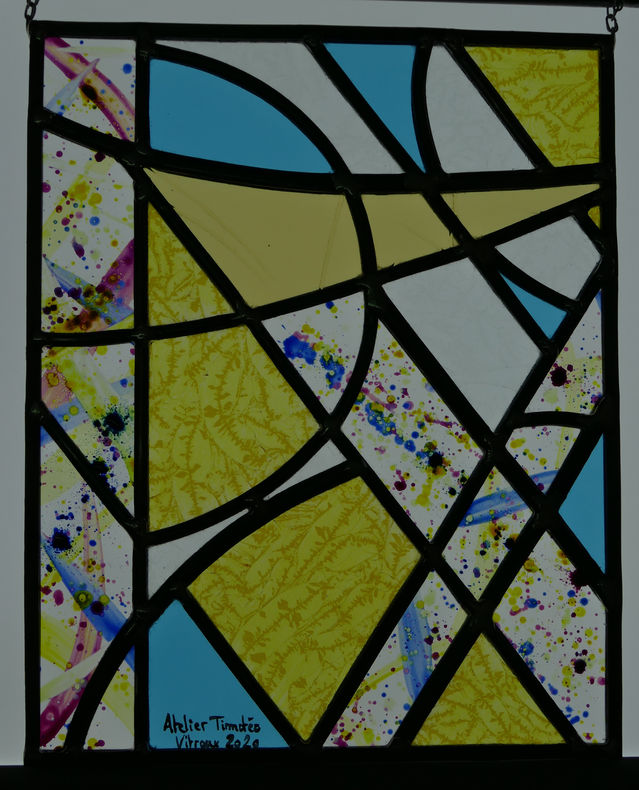top of page

Stained glass creation
Atelier Timotéo Vitraux presents its creations of classic or contemporary stained glass. These stained glass windows can be integrated into a double glazing (see bottom of page).
In a very classic, figurative, abstract, geometric, painted or unpainted manner, which can include fusing or thermoforming, in blown or industrial glass, each creation is unique.
It can be an adaptation of a painting (Mucha, Cézanne, Van Gogh, etc ...) or of a photograph (cf. stained glass of the Port of La Rochelle, France), or a geometric or totally abstract decor. We can also create a project from existing artistic styles.
Figurative
Abstract and geometric
How is a stained glass window made:
We start by creating a scale model of the future stained glass on a scale of 1/10th (generally). It will then be used to trace the stained glass window to its final size. We can make a cardboard which is in a drawing on a scale 1/1 of the stained glass, this is useful in particular in the event of large work of painting.
The realization of the stained glass begins with layout on thick paper. We will find there the lines of leads. We then calibrate each piece, leaving a small strip of paper of about 2mm including the line, which will give us a paper template. We remove this strip of paper because it is the heart of lead, vertical bar of lead that holds the wings together.
Thanks to the paper templates, the pieces of glass are cut into plates. The glass is tinted in mass, but we can use totally colorless, textured, variegated, mirror, opaque glass, etc.
If there is paintings, the pieces of glass are painted and baked in a glass kiln at generally 630-650 °C.
Once the pieces of glass are ready, they are assembled with lead bars in the form of a capital H or I. The pieces of glass are therefore sandwiched in the wings of lead. Once assembled, the stained glass pannel is soldered with tin.
In order to stiffen it and make it waterproof, the stained glass pannel is filled with a liquid putty made about linseed oil and Meudon white powder. This is not necessary if the window is placed in a double glazing.
It only remains to put the panel in its location.
Double glazing:
All stained glass can be included in a double glazed glass, if they are not in relief.
The stained glass is then integrated into the air space which separates the glasses making up the double glazing.
It will then be sheltered from time, bad weather and much more secured. In addition, the stained glass being composed of glass but also of lead which can be bad to health, this process makes it possible to include stained glass in any building or premises (school, gymnasium, nursery, refectory, bathroom, kitchen , etc ...). The glazing may be laminated or toughened glass in order to meet certain safety standards and provide protection against projectiles or intrusions.
Double glazing is therefore a solution guaranteeing durability, security, health and thermal and sound insulation.
bottom of page

































